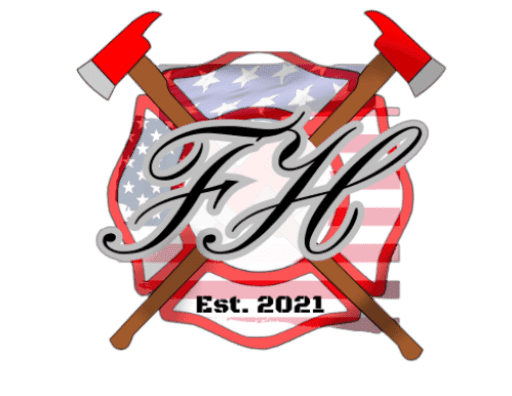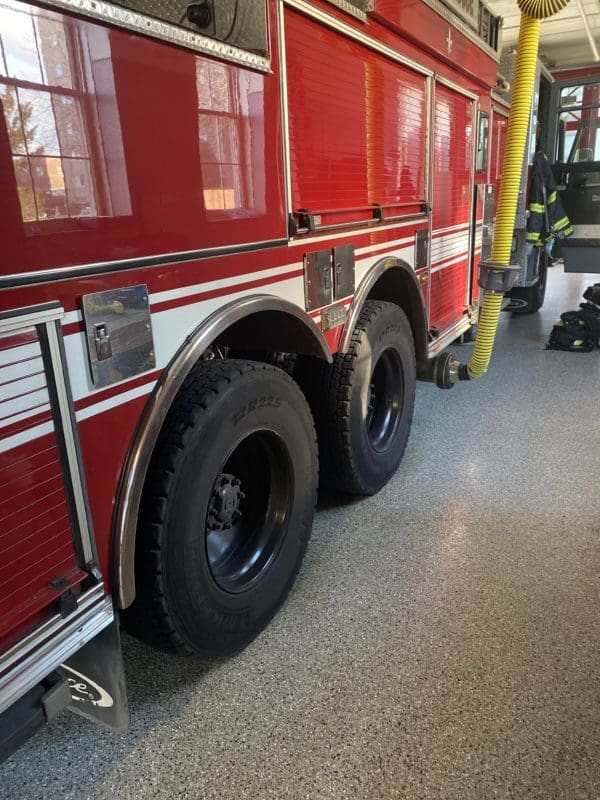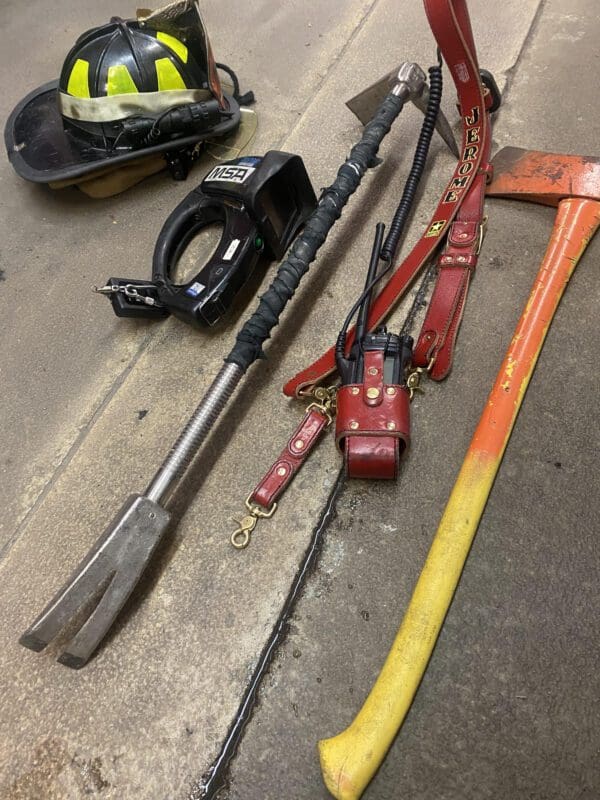What do firefighters use to put out fire- An Inside Look
In today’s modern fire service, there are so many things and moving parts that go into a structure fire or pretty much any management incident. From the outside in, it would seem that most incident commanders/ battalion chiefs or whoever takes control of that scene, just have to worry about what’s going on from the outside. This is especially if you receive most of your firefighting knowledge from shows like Chicago Fire or Station 19. There is much more that goes into these scenes such as knowing the required equipment for the specific incident, as well as the type of structure or location that the incident is occuring at.
So what do firefighters use to put out fire?
Firefighters use a large variety of different equipment ranging from emergency vehicles, to the fire hoses and their types based on their function. Firefighters use different types of personal protective equipment such as hazmat suits or structural firefighting. Firefighters also use a large variety of hand tools such as sledgehammers, axes & halligan tools. Some hydraulic tools are also used such as cutters & spreaders (Jaws of life). Gas powered equipment used commonly in ventilation operations are things like chainsaws and K12 saws.
Let’s go a little deeper into each of these.
Emergency Vehicles

There are so many moving parts in a structure fire, that includes A LOT of equipment that needs to be on scene for firefighters to be able to do their jobs effectively. One thing that I have personally wondered before I entered the fire service was why the fire trucks (at least in the US) are so big and long. At the time, I did not know that fire engines and trucks have specific functions. We’re gonna talk about them below
Pumpers
Pumper trucks are your typical engines that do what they are called, pump. Pumpers are the main water pumping source that supplies water to the fire hoses, as well as the master streams. The pumper engine has two distinct modes, Driving and pumping. These two modes are embedded into the gearbox, as if you’re shifting your transmission from park to drive to reverse to pump.
Aerials
The aerial or many times just referred to as the truck or ladder, together with the engine, are the bread and butter of the fire service when responding to structure fires. Aerials usually have a very large ladder that is lifted and moved around with hydraulics, they tend to reach about 100 ft when it is fully extended.
The aerials are used to transport firefighters or equipment on high levels of a structure, or if a fire requires water to be sprayed from a high place, such as fighting fire in an attic, or in a highrise where the fire may be located pretty high up. There is no need for a firefighter to drag a firehose from the ground, all the way to the top of the aerial. This is possible because most aerials have a permanent mounted pipe that connects to a master stream at the tip of the aerial’s ladder.
Another type of aerial that is much longer than the average 100ft aerials are the Tillers. Tillers are fire trucks that are on 3 axles. The tillers are so long that they require two drivers. One driver controls the truck, and the second driver controls the wheels on the 3rd axle, or the very end of the truck. Tiller ladders can reach around 107ft (about 9 stories high). It looks like a semi truck painted red with a ladder on top.
It should be noted that tillers are not very common anymore, because normal aerials are beginning to be able to reach those extreme heights, there are even some aerials made by companies such as E-One that have a height of 137ft (around 13 stories). Although tillers are pretty cool to see in action, they are not as common as they used to be.
Tanker/Tenders
Tankers and tenders are a type of apparatus that is designed to bring a large amount of water to a fire scene where a hydrant is not available. Some of the most common places tenders or tankers are used are on farm fires, where there is not a nearby hydrant that an engine can connect to. The engine or the pumper would connect to the tanker as if it were a hydrant, and pump water as needed.
Another common location where you would find tenders are departments that serve areas that have large mansions or properties. Think about some of the largest homes in Beverly Hills. There are no nearby hydrants that an engine can connect to and reasonably reach any part of a mansion with ease that may be on fire.
According to NFPA 1901 Tenders must have the capability to carry at least 1000 gallons. Most department tenders carry an average of about 2600 gallons. Tenders are equipped with a pump on them so it can push water out of the tank, making it easier for the pumper suctioning the water from the tenders tank.
Quint
The Quint is an interesting apparatus. The Quint is pretty much an all in one pumper, aerial & water tanker. It also stores ground ladders and fire hoses. The quint first debuted in Metz, Germany back in 1912, then the first American made Quint was made back in 1935.
In my own opinion, I believe that Quints are a great choice for departments that must cover a large area, with a few available apparatuses available. Even if the quint is first on scene to a structure fire, it can perform the function of a pumper until it arrives, then it can function as an aerial, or both.
Fire Hose Types

When it comes to fighting fire, there are different types of hoses that are used and needed for their specific function. Along with the hose itself, there are also different types of nozzles that have different functions to it. Yes, they both shoot water, but some nozzles are more effective for reach, while others are more effective for creating steam and lowering the overall temperature in a room that has fire.
Large Diameter Hose (LDH)
This is known as a large diameter hose (LDH), and the primary function of this hose is to provide water to the fire engine. LDHs commonly have a diameter of about 5 inches. This allows for a very large amount of water to pass through. Fully charged LDH is very heavy. I recently wrote another post where I pointed out how heavy fully charged hoses weigh. A 50ft of fully charged LDH can weigh about 50lbs. If you are holding that same charged LDH at the middle coupling of 100ft of charged LDH, it’s now gone up to about 100lbs.
Attack Hose
The most common sized hose for attacking fire is the 1 ¾ in hose line. This is most common as well on most fire apparatuses and many times are used for high rise packs. These hoses can flow water at 100-180 gallons per minute.
Supply/Attack Hose
The next common type of hose is the 2 ½ in hose. This hose is used as both a supply hose, and as an attack hose. You commonly see this being used for supply in one of three ways:
- The hose is connected from one engine to another engine when a fire hydrant is located pretty far from the scene of the emergency. Think of it like daisy chaining fire engines to get water across long distances without losing pressure, better known as Relay Pumping.
- Second way is when the 2 ½ is attached directly to the engine, and on the other end of the hose is a Wye. A wye is a device that gives you the ability to attach two hoses from the water coming from the single 2 ½ inch.
- Third way is having the hose connected to a building’s Fire Department Connection (FDC). Water is pumped into the building’s standpipe system supplying water for every floor that a high-rise pack will be attached to.
This hose can support water flowing at around 250-500 gallons per minute. It is common to see this hose attached to a monitor for a defensive attack, or a smooth bore nozzle in order to deliver high amounts of water on a fire.
Nozzle Types
As mentioned before, there are two main nozzle types that are used on a handheld hose line. There are also specialty nozzles such as master streams, and cellar/distributor nozzles.
Combination Nozzle
Combination nozzles are one of the most common nozzles used at a fire scene. They need a minimum of 100psi to operate efficiently and effectively. Combo nozzles have two distinct settings. There is straight stream mode, and fog stream. Something combination nozzles do that a smooth bore’s solid stream cannot do, is turn the water into droplets.
Combination nozzles are especially used when attacking fires, because they can quickly cool down rooms because the water droplets turn into steam. If a room begins to reach near the 1000 degree mark, the entire room will instantly ignite (flashover). The droplets that are created from the combination nozzle get sprayed into those heated vapors, slightly cooling down those gasses, giving you time to exit that room before flashing.
Smooth Bore Nozzle
According to Jones & Bartlett, “A smooth-bore nozzle has several advantages over a fog-stream nozzle. For example, this nozzle has longer reach than a combination fog nozzle operating at a straight stream setting. In addition, a smooth-bore nozzle is capable of deeper penetration into burning materials, resulting in quicker fire knockdown and extinguishment.
Smooth-bore nozzles also operate at lower pressures than many adjustable-stream nozzles. Smooth-bore nozzles are designed to operate at 50 psi (350 kPa), whereas many adjustable-stream nozzles generally require pressures of 75 psi (525 kPa) to 100 psi (700 kPa).”
Master Stream Nozzle
Master stream nozzles are able to deliver the highest amounts of water flow, while requiring less pressure than a combination nozzle. Master streams are able to run efficiently and effectively at around 80 psi, and deliver 350 gpm or even more. When master streams are in use, usually they should not be operated when firefighters are inside a burning structure. Check out this below video about how strong a master stream can be.
Distributor Nozzle
Distributor nozzles are also known as cellar nozzles. The great thing about these nozzles is that you do not need to enter the basement. Basement fires are extremely dangerous, and have unfortunately been the cause for many line of duty deaths. These nozzles have at least 4 outlets that are designed to spray in every direction without having to enter the basement.
Hand Tools
There are a handful of tools that firefighters are expected to always enter a building with. I mentioned in this post here how and why firefighters use hand tools when they enter a structure fire. Common tools that you will lose are:
- Flathead & Pick Head axes
- Halligan
- Sledgehammer
- K12 (gas powered)
- Chainsaw
Ropes flat head and pick head axes for cutting, chopping and helping with forcible entry. The flat head ax is used together with the halligan tool to drive the adze of the halligan into a door jamb to force that door open.
Sledgehammers are a slightly less common tool used on the fireground, but one that I particularly like to use. They’re great for forcible entry, sounding floors, and taking down walls.
The K12 circular saw is a gas powered or battery powered commonly used in many scenarios, such as cutting a hole in a roof for vertical ventilation, or cutting a hood latch on a car, during a car fire. Many K12 saws have diamond tipped blades, as well as blades designed to cut through shingles more effectively.
Chainsaws pretty much have the same function as the K12 saw, but it is used much more during vertical ventilation than anything else.
One caveat to add when it comes to using gas powered equipment during vertical ventilation. Gas powered chain saws and K12s require oxygen to work. If you are on a roof where there is plenty of smoke coming up and you’re attempting to cut that hole, the smoke is going to choke out the saw. The saws need air to complete combustion, and in order to avoid this all together, many departments are moving to battery powered saws.
Conclusion
To bring this all together, this list of equipment is specific to fighting structure fires. There are many other tools such as hydraulic cutters and spreaders that are used during vehicle extrications, ropes for technical rescues and many other tools.
If you found this article helpful, let us know in the comments below about your thoughts on it. Also stay up to date whenever we publish a new article, as well as receiving our 4 step process that someone looking to enter the fire service can get hired by their dream department.
See you guys next time.



Good Article King, I would add one thing, possibly an edit regarding “Tillers”. The main advantage is maneuverability. The tiller truck can get around much tighter corners in narrow streets without having to stop, and back up to reposition. It is astonishing how tight a turn and space a good driver-tiller team can get through. I am sure you know this, but non fire readers probably don’t. All our trucks, as of my retirement, were tiller trucks. Retired San Francisco Fire.
I appreciate your comment, and that’s pretty awesome. I hope to ride a tiller someday, but it sure won’t be in my area unfortunately. Thank you for the feedback!